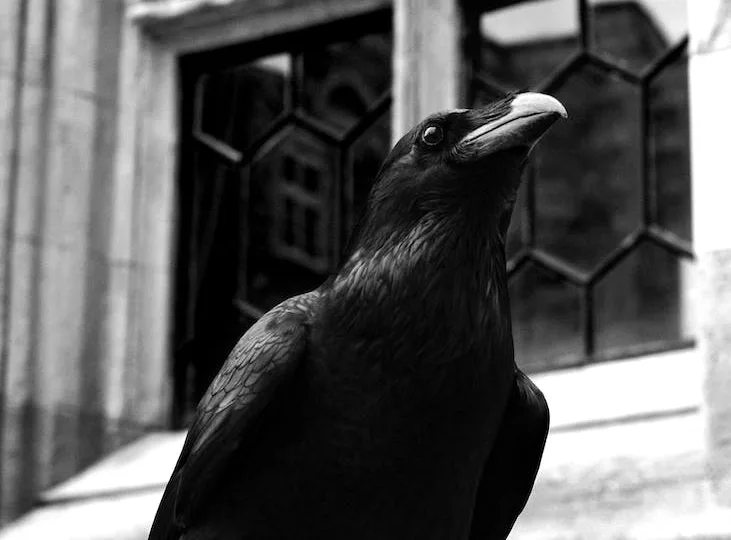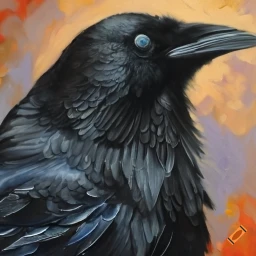Witness the Magnificence: Corvus Sinaloae – Sinaloa Crow Revealed
December 30, 2023 | by BlackCrow.com

Meet the Sinaloa Crow
Introduction to the Sinaloa Crow
The Sinaloa Crow, scientifically known as Corvus sinaloae, is a remarkable bird species found along the Pacific coast from Sonora to Colima in Mexico. These intelligent and adaptive birds belong to the crow family, Corvidae. With their distinctive appearance and behaviors, the Sinaloa Crows have captivated the attention of bird enthusiasts and researchers alike.
Habitat and Distribution of the Sinaloa Crow
The Sinaloa Crows are primarily found in the western coastal regions of Mexico. They inhabit a variety of habitats, including open woodlands, forests, agricultural areas, and even urban environments. These adaptable birds have shown a remarkable ability to thrive in different ecosystems.
The distribution of the Sinaloa Crow is limited to the Pacific coast, with its range spanning from Sonora in the north to Colima in the south. Within this range, they can be observed in areas such as Sinaloa, Nayarit, and Jalisco. Their preference for coastal habitats distinguishes them from other crow species, making them a unique and interesting bird to study.
To learn more about other fascinating crow species from around the world, check out our articles on the pied crow, little crow, cape crow, American crow, hooded crow, carrion crow, Indian jungle crow, Somali crow, slender-billed crow, Flores crow, brown-headed crow, Hawaiian crow, Tamaulipas crow, Bismarck crow, Jamaican crow, Mariana crow, white-necked crow, eastern jungle crow, large-billed crow, Bougainville crow, New Caledonian crow, Torresian crow, Cuban crow, fish crow, palm crow, house crow, grey crow, collared crow, piping crow, long-billed crow, Banggai crow, violet crow, white-billed crow, and prehistoric crow species.
Appearance and Characteristics
The Sinaloa Crow, scientifically known as Corvus sinaloae, is a magnificent bird found along the Pacific coast from Sonora to Colima. Let’s explore the physical features and behaviors of this captivating species.
Physical Features of the Sinaloa Crow
The Sinaloa Crow is a medium-sized bird with a striking appearance. It has glossy black feathers covering its body, giving it a sleek and sophisticated look. The plumage is uniform throughout, with no distinct patterns or markings.
Measuring approximately 39-43 centimeters (15-17 inches) in length, the Sinaloa Crow has a robust build and a wingspan of about 84-91 centimeters (33-36 inches). Its beak is sturdy and slightly curved, enabling it to forage for a variety of food sources.
One distinguishing feature of the Sinaloa Crow is its bright, piercing eyes. The eyes are a deep brown or black color, adding to its charismatic presence. These keen eyesight allows the crow to spot potential prey or food sources from a distance.
Behaviors and Vocalizations
The Sinaloa Crow is an intelligent and social bird known for its complex behaviors and vocalizations. They are highly adaptable and can be found in a variety of habitats, including urban areas, agricultural fields, and coastal regions.
These crows are known for their raucous calls, which can be loud and distinctive. Their vocalizations include a range of harsh caws and croaks, used for communication within the flock and to establish territorial blackcrow boundaries. These calls can often be heard echoing through the trees or across open spaces.
In terms of behavior, the Sinaloa Crow is an opportunistic feeder, meaning it will consume a wide range of food items. Its diet includes fruits, insects, small vertebrates, eggs, and carrion. This adaptability allows the crow to thrive in various environments and ensures its survival even in challenging conditions.
These birds are highly social and often seen in large groups known as flocks or murders. Within the flock, they engage in complex social interactions, including cooperative foraging, communal roosting, and even cooperative defense against potential threats.
Understanding the physical features and behaviors of the Sinaloa Crow helps us appreciate the unique characteristics of this species. To learn more about encountering and protecting these magnificent birds, continue reading our next section on Appreciating and Protecting these Magnificent Birds.
The Importance of the Sinaloa Crow
The Sinaloa Crow plays a vital ecological role in its native habitat. Understanding its importance helps us appreciate the significance of conserving these magnificent birds.
Ecological Role of the Sinaloa Crow
The Sinaloa Crow contributes to the ecosystem in several ways. Firstly, it helps control populations of insects and small vertebrates. By preying on these animals, the Sinaloa Crow helps maintain a balance in the local food chain.
Additionally, Sinaloa Crows are known to scavenge on carrion, playing a crucial role in the decomposition process and nutrient cycling. They help clean up the environment by consuming carcasses that would otherwise attract pests and promote the spread of diseases.
Moreover, these crows are skilled seed dispersers. As they forage for food, they inadvertently transport seeds from one location to another, aiding in the dispersal and regeneration of plant species within their habitat.
Conservation Status and Threats
The conservation status of the Sinaloa Crow is currently listed as “Least Concern” by the International Union for Conservation of Nature (IUCN). However, it is important to remain vigilant about potential threats to their population.
Habitat loss and degradation pose significant challenges to the Sinaloa Crow’s survival. The expansion of urbanization, agriculture, and infrastructure development can lead to the destruction of their natural habitat. The loss of suitable black crow nesting sites and foraging areas can disrupt their breeding and feeding patterns.
Other potential threats include pollution, climate change, and predation by introduced species. Pollution can harm the health of the crows and impact their reproductive success. Climate change may alter their habitat and food availability, affecting their overall population dynamics. Introduced predators may compete with or prey upon the Sinaloa Crow, placing additional pressure on their population.
Conservation efforts, such as habitat preservation, restoration, and public awareness, are crucial for ensuring the continued survival of the Sinaloa Crow. By protecting their habitat and raising awareness about their ecological importance, we can contribute to the conservation of these remarkable birds and the preservation of biodiversity.
Remember to check out our article on blackcrows for more fascinating facts about the Sinaloa Crow and ways to appreciate and protect these magnificent birds.
Fascinating Facts about the Sinaloa Crow
The Sinaloa Crow, also known as Corvus sinaloae, is a remarkable bird with unique traits and interesting behaviors. Let’s explore some fascinating facts about this magnificent species.
Unique Traits and Adaptations
The Sinaloa Crow possesses several distinctive traits and adaptations that set it apart from other crow species. Here are some noteworthy characteristics:
- Endemic to the Pacific Coast: The Sinaloa Crow is native to the Pacific coast of Mexico, specifically from Sonora to Colima. This limited distribution contributes to its uniqueness and makes it an important species to conserve.
- Medium-sized Crow: The Sinaloa Crow is classified as a medium-sized crow, measuring approximately 40-43 centimeters (15.7-16.9 inches) in length. Its size falls between smaller crows like the Pied Crow and larger ones like the American Crow.
- Shiny Black Plumage: The Sinaloa Crow showcases a glossy black plumage, which adds to its striking appearance. Its sleek feathers reflect sunlight, giving it a visually appealing sheen.
- Distinctive Bill Shape: This crow species possesses a unique bill shape. Its bill is slightly curved, allowing it to efficiently forage for a variety of food sources in its habitat.
- Adapted to Coastal Environments: The Sinaloa Crow has adapted to thrive in coastal environments, including estuaries, mangroves, and nearby areas. Its ability to adapt to these specific habitats demonstrates its ecological resilience.
Interesting Behaviors and Interactions
The Sinaloa Crow exhibits intriguing behaviors and engages in various interactions within its ecosystem. Here are some captivating aspects of its behavior:
- Social Nature: Similar to other crow species, the Sinaloa Crow is highly social. It forms large groups, called roosts, where individuals gather to rest, communicate, and engage in cooperative activities.
- Intelligent Problem-Solving Skills: Crows are renowned for their intelligence, and the Sinaloa Crow is no exception. It demonstrates black crow problem-solving abilities, using tools to extract food and displaying complex behaviors that showcase its cognitive capabilities.
- Feeding Habits: The Sinaloa Crow has an omnivorous diet, feeding on a diverse range of food sources. It scavenges for carrion, consumes insects, small vertebrates, fruits, and even human-provided food in certain cases.
- Vocalizations: Like other crows, the Sinaloa Crow communicates through an array of vocalizations. These calls serve various purposes, including warning the group of potential threats, establishing territory, and coordinating group movements.
- Interactions with Humans: The Sinaloa Crow has adapted to human presence in certain areas, often foraging near human settlements and agricultural fields. It is important to appreciate and protect these magnificent birds to ensure their continued existence.
The Sinaloa Crow’s unique traits, adaptations, and intriguing behaviors make it a fascinating species to study and admire. By understanding and appreciating these remarkable aspects of its existence, we can contribute to the conservation efforts aimed at safeguarding this magnificent bird.
Encountering the Sinaloa Crow
If you’re an avid bird watcher or simply fascinated by avian species, encountering the Sinaloa Crow can be an exciting experience. Here are some tips to help you spot these magnificent birds and appreciate their unique beauty. Remember to always observe birds in their natural habitat and prioritize their well-being.
Tips for Spotting the Sinaloa Crow
- Research Their Habitat: The Sinaloa Crow is primarily found along the Pacific coast, ranging from Sonora to Colima. Before setting out to spot them, familiarize yourself with their preferred habitat, which includes open woodlands, agricultural areas, and coastal regions.
- Listen for Vocalizations: The Sinaloa Crow is known for its distinctive calls. Listen for their harsh, raspy caws and croaks. By familiarizing yourself with their vocalizations, you can increase your chances of locating them.
- Observe Their Flight Patterns: Sinaloa Crows are agile in flight and often travel in small groups. Watch for their graceful flight patterns, which may include soaring, gliding, and quick changes in direction.
- Look for Their Physical Features: The Sinaloa Crow has a glossy black plumage, a sturdy beak, and strong legs. These characteristics distinguish them from other bird species in their range.
- Use Binoculars and Spotting Scopes: To get a closer look at the Sinaloa Crow and appreciate their details, equip yourself with binoculars or a spotting scope. These optical tools can enhance your birdwatching experience.
Appreciating and Protecting these Magnificent Birds
When encountering the Sinaloa Crow, it’s important to appreciate their presence while respecting their natural habitat. Here are some additional tips for appreciating and protecting these magnificent birds:
- Maintain a Safe Distance: Avoid disturbing the birds or their habitat. Observe from a distance to prevent unnecessary stress or disruption.
- Follow Ethical Birding Practices: Adhere to ethical birding guidelines, such as not approaching nests or disturbing breeding behavior. Respect the birds’ space and minimize your impact on their environment.
- Support Conservation Efforts: Learn about black crow organizations working to protect and conserve the Sinaloa Crow and consider supporting their initiatives. Your contributions can help ensure the long-term survival of these magnificent birds.
- Spread Awareness: Share your knowledge and enthusiasm for the Sinaloa Crow with others. By raising awareness about this unique species, you can inspire more people to appreciate and protect them.
Remember, the joy of encountering the Sinaloa Crow lies not only in spotting them but also in understanding their role in the ecosystem. Take the time to observe and appreciate the beauty of these birds, and contribute to their conservation in any way you can.
RELATED POSTS
View all


